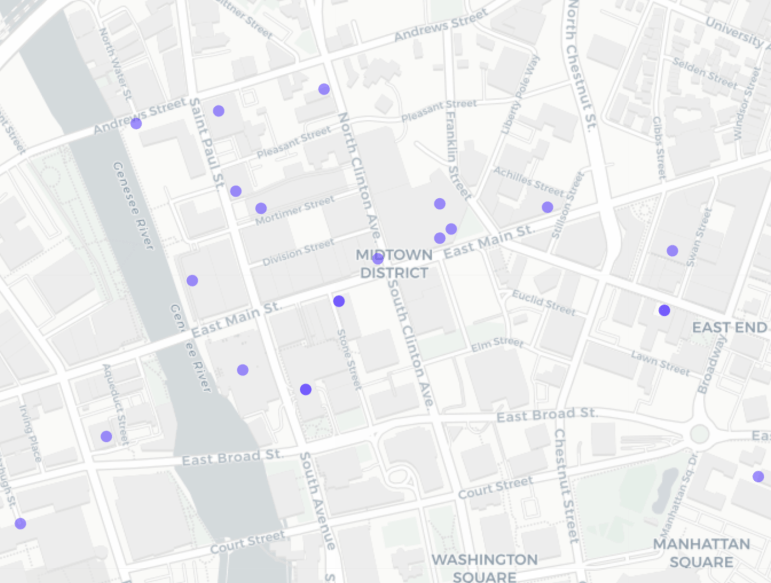The long-held view that crime in Rochester is concentrated in the city’s center doesn’t play out in the numbers. In the last month, property and violent crimes clustered in the northwest part of the city, followed by the southeast area.

The Rochester Beacon’s new Crime Dashboard documents these trends through data visualizations captured by HiGeorge, a data visualization company based in California that offers localized, interactive datasets to publishers. The dashboard uses data compiled by Rochester Police Department.
While there was a two-day surge in property crimes on May 30 and May 31 (110 and 42, respectively) following protests after the death of George Floyd, such offenses in the city returned to their normal range—a couple dozen a day—shortly afterward. Protests against Daniel Prude’s death did not create a similar spike.

In fact, the two main categories of property crimes—larceny and burglary—have declined since 2012, the Rochester Police Department’s data portal shows. There were 7,370 larcenies committed eight years ago, compared with 4,547 in 2020 year to date. Burglaries fell from 2,727 in 2012 to 1,391 this year.
By contrast, homicides and aggravated assaults declined in some years but have increased since 2018, the data show. There were 26 homicides in 2018. So far, there have been 38 homicides in 2020. Aggravated assaults totaled 936 in 2018 and 1,016 to date this year.
Across the nation, property crimes are more common than violent offenses. A Pew Research report points to FBI data from 2019, which reports a total of 2,109.9 property crimes per 100,000 people, compared with 379.4 violent crimes per 100,000 people. Like in Rochester, larceny tops the list.
A month ago, a Gallup survey found that Americans are more likely to perceive that crime has increased (78 percent) over the previous year. However, the same people were less likely to perceive more crime in their local area (38 percent). That gap is the highest Gallup has recorded over three decades. (Gallup conducts an annual crime poll.)
Twenty-nine percent said they would be afraid to walk alone in their local area at night, down from 37 percent a year ago.
That response roughly matches the previous low of 30 percent recorded only twice in the last half-century, in 2017 and 2001—both years when reported household crime victimization was at its lowest, Gallup says.
This perception gap impacts communities across the U.S. Experts often point to the way data is presented as one of the reasons for the gap.
Smriti Jacob is Rochester Beacon managing editor.